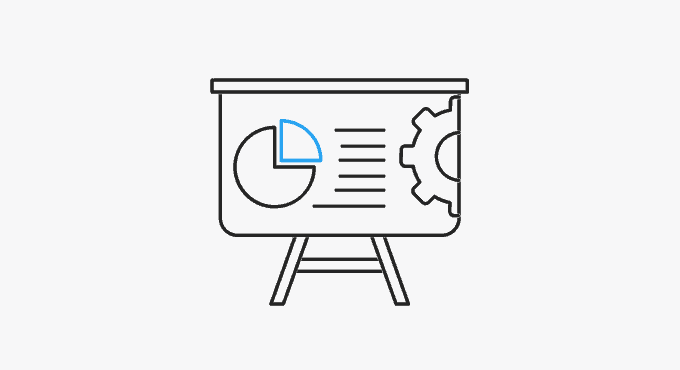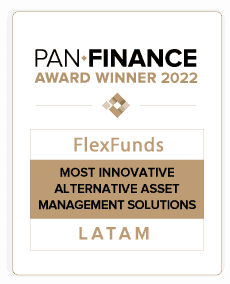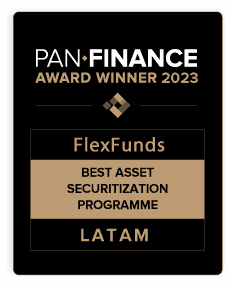- This article explains the types of investment vehicles traded in capital markets and which options are best suited for different investor profiles.
- The information is aimed at asset managers and advisors who want to learn how investment vehicles can enhance the distribution of their investment strategy in international markets.
- FlexFunds’ solutions allow any type of asset to be converted into a listed product (ETP) in less than half the time and cost of any other market alternative. For more information, feel free to contact our expert team.
In an increasingly globalized world, the map of investment opportunities has expanded thanks to digitalization, which has helped close existing gaps in access to financial products and, in turn, driven the democratization of these options.
In fact, since 2011, the global percentage of adults with access to a financial account has increased from 51% to 76%, according to the World Bank’s Global Findex report, which highlights that “digitalization facilitated this increase, as millions of adults opened accounts and began using them.”
As this proportion of users grows, so does the interest in accessing the different investment vehicles available in capital markets, whether to outpace inflation or achieve more ambitious financial goals.
But what types of investment vehicles are available according to different investor profiles?
The two major types of investment vehicles
Investment vehicles are divided into two major segments, with different characteristics based on the risk exposure and profile of each investor, depending on their horizon for meeting their goals.
Fixed-income vehicles
First, there are fixed-income investment vehicles, usually structured for a more conservative investment profile by offering regular interest payments and the return of the invested capital once the agreed term is met.
These vehicles include bonds issued by governments, companies, and other entities seeking financing for projects and managing their finances, leveraging capital raised from investors.
One key characteristic is that the interest rate is set in advance, reducing volatility in the secondary market once they start trading, as there is more certainty in discounting future cash flows.
However, since they are tied to specific terms, their liquidity tends to be lower than that of other financial vehicles or assets, such as stocks. For this reason, they are geared toward individuals with a long-term investment horizon.
Equity vehicles
On the other hand, equity investment vehicles include investment funds, exchange-traded funds (ETFs), or direct shares linked to a company that may pay periodic dividends.
In these cases, since the performance of assets depends on the company’s performance and/or its dividend flow, which is not always guaranteed, there is greater uncertainty, leading to higher volatility but also greater potential returns.
For this reason, equity vehicles are more advisable for more aggressive profiles with a very long-term horizon or those actively monitoring frequent fluctuations to act accordingly.
Alternatives for each profile
Thanks to the development of financial markets, there is now an option for almost every type of investor, depending on their experience, the level of risk they are willing to take, and the money they are ready to invest in a particular investment vehicle:
Vehicles for conservative profiles
In a context of high global interest rates, fixed-income investment vehicles have gained prominence due to the returns they are providing, which could extend for a long time.
While the U.S. Federal Reserve (Fed) has already announced rate cuts from the current 5.25%-5.50%, inflation remains around 3% annually, so there will still be a wide margin for positive real returns for fixed-income vehicles and assets.
Among the most popular and conservative options are fixed-term deposit certificates (CDTs), whose agreed return is provided once the set term expires.
Vehicles for moderate profiles
For investors with a low to moderate risk profile, government bonds are also available. These are issued to finance countries and are considered to have low default risk.
Some notable examples include U.S. Treasury bonds, German government bonds, and Japanese government bonds. In the case of U.S. bonds, they are considered “the safest in the world” and currently yield between 4.5% and 5% per year.
Certain fixed-income titles may also come from high-credit-quality companies. In these cases, bonds remain very safe, but their interest rate is slightly higher due to the extra risk of being a company rather than a government. Apple, Coca-Cola, Microsoft, and many other large corporations finance themselves this way.
Vehicles for aggressive profiles
Lastly, for more aggressive investors who can tolerate higher risk, there are investment vehicles focused on equity.
The range of options includes stock or commodity investment funds, managed by professional managers who seek to maximize the money deposited by investors through different strategies in a diversified asset portfolio.
In addition, there are ETFs, which track the performance of specific indexes, such as the S&P 500, Dow Jones, or Nasdaq.
This is one of the best ways to bet on the entire stock market and eliminate unsystematic risk, which is the risk specific to a single company.
“As each index fund contains a pre-selected collection of hundreds or thousands of stocks, bonds, or sometimes both, if a single stock or bond in the collection underperforms, another is likely to perform well, helping to minimize losses,” according to Vanguard.
Popular investment vehicles also include REITs (Real Estate Investment Trusts), which allow investors to participate in the real estate sector without directly acquiring property and receive returns from these assets through management, such as renting out commercial offices or residential properties.
A solution compatible with multiple investment vehicles
It’s important to note that any type of asset portfolio can be converted into a “bankable asset” through a securitization process to increase liquidity and make it more easily distributable among investors.
At FlexFunds, we conduct the asset securitization process to generate an exchange-traded product (ETP) linked and backed by a portfolio of underlying assets.
This facilitates investor onboarding and access to your project and provides a cost-efficient structure for developing investment strategies. Additionally, our “Flex” products are Euroclearable, allowing for global trading.
If you want more information about our asset securitization process, you can easily contact our specialist team.
Sources:
https://www.worldbank.org/en/news/feature/2023/02/02/latest-global-findex-data-chart-10-years-of-progress-in-financial-inclusio
https://investor.vanguard.com/investor-resources-education/understanding-investment-types/what-is-an-index-fund








